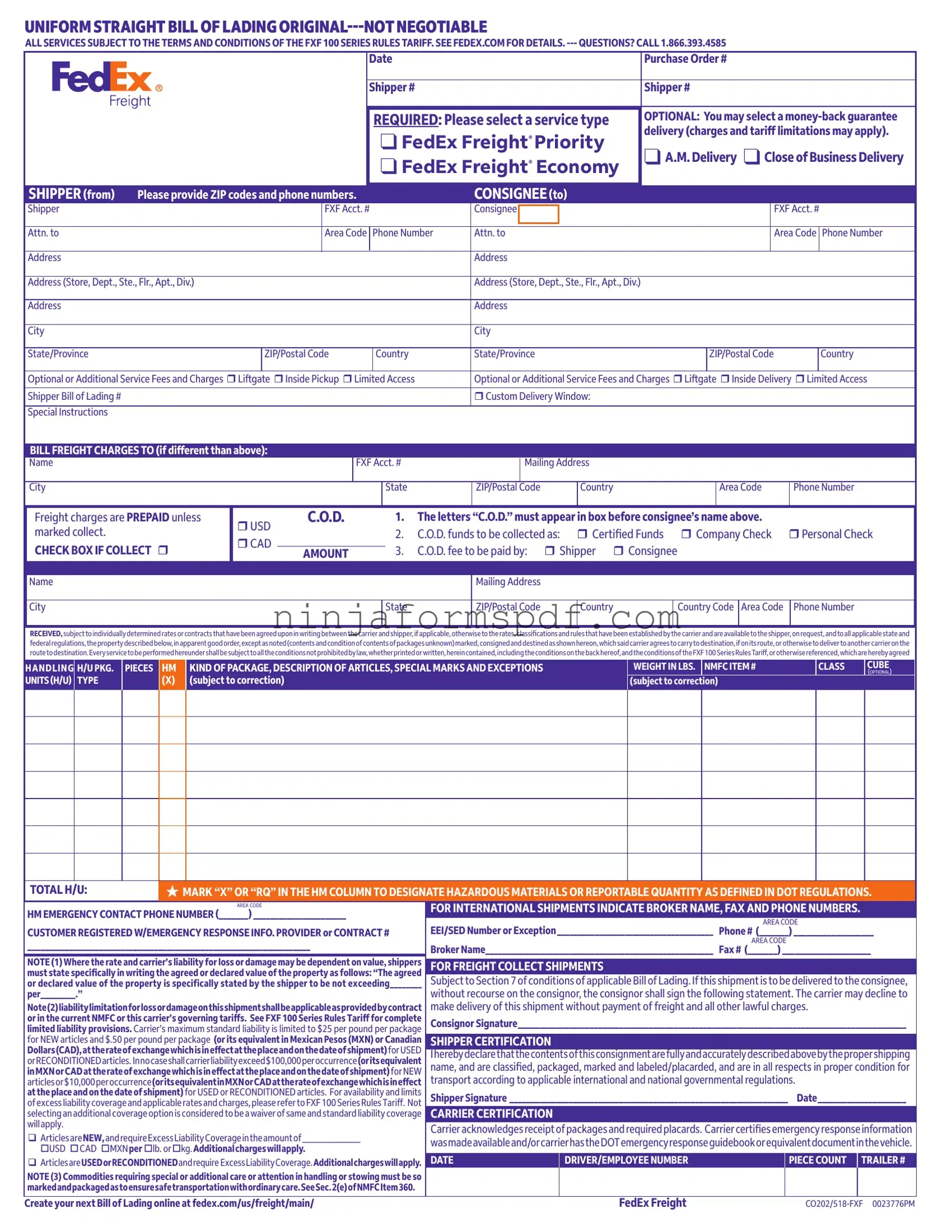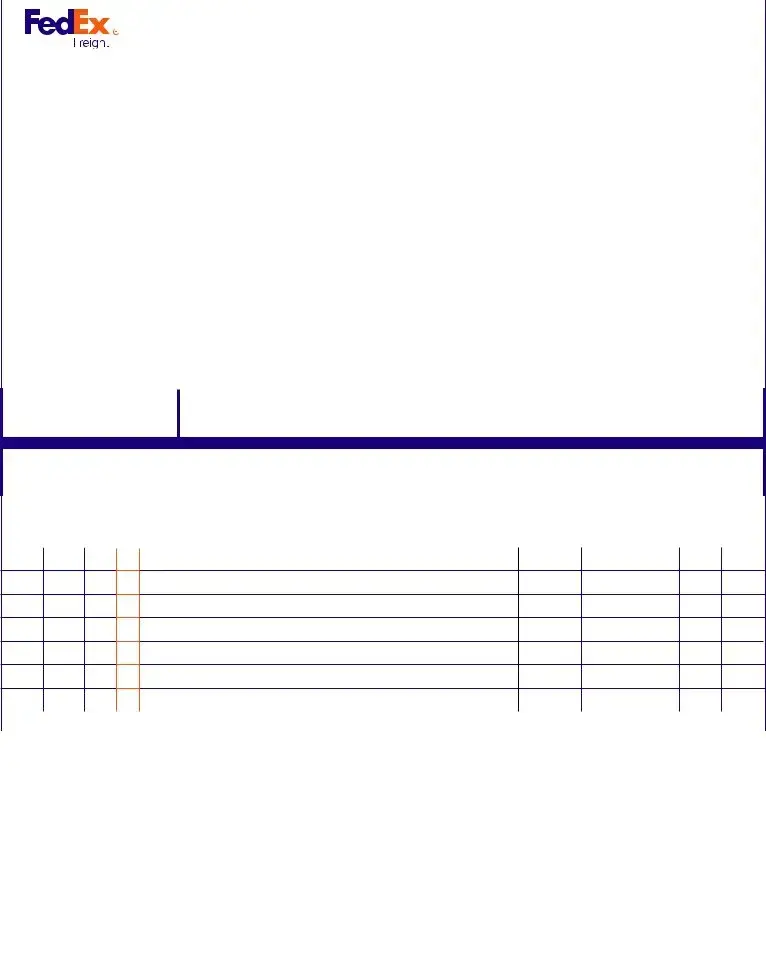What is a FedEx Bill of Lading?
A FedEx Bill of Lading is a legal document that outlines the details of shipments carried by FedEx Freight services. It includes information such as the date of shipment, purchase order numbers, shipper and consignee details, service types, and details about the freight charges. It serves as a contract between the shipper and FedEx for the transportation services provided.
Why is it marked "ORIGINAL---NOT NEGOTIABLE"?
This notation indicates that the document is the original copy of the Bill of Lading and cannot be negotiated or transferred to another party. It specifies that the Bill of Lading is a receipt and contract for the goods being shipped but does not convey ownership of the goods.
What does the term "Freight charges are PREPAID unless marked collect" mean?
This means that the cost of shipping the freight is typically paid by the shipper before the shipment is sent unless the box indicating charges are to be collected upon delivery is checked. If the charges are to be collected, it signifies that the recipient is responsible for the payment of the freight charges upon delivery.
Can I specify a declared value for the shipment?
Yes, shippers can state a specific declared value of the property being shipped by writing the agreed or declared value in the area provided on the Bill of Lading. This is important for determining the carrier’s liability in case of loss or damage.
What are the conditions for shipping hazardous materials?
When shipping hazardous materials, the shipper must mark an "X" or "RQ" in the HM column to designate hazardous materials or reportable quantity as defined by DOT regulations. The emergency contact phone number and additional required information for the shipment must also be provided. It ensures compliance with safety and legal requirements.
How is the carrier's liability for loss or damage determined?
The carrier’s maximum standard liability is limited to certain amounts per pound per package, depending on whether the articles shipped are new, used, or reconditioned. For detailed limits and provisions regarding liability, one should refer to the FXF 100 Series Rules Tariff.
What does it mean by "Shipper Certification"?
The Shipper Certification is a statement by the shipper declaring that the contents of the consignment are properly classified, packaged, marked, labeled, and in all respects in proper condition for transportation according to the applicable regulations. It is the shipper's assertion of compliance with all shipping rules and regulations.
How can I get excess liability coverage for my shipment?
To obtain excess liability coverage for a shipment, shippers must select the appropriate coverage option and declare the value on the Bill of Lading. Additional charges will apply for this coverage. Not selecting an additional coverage option is considered a waiver of it, and standard liability coverage will apply.

